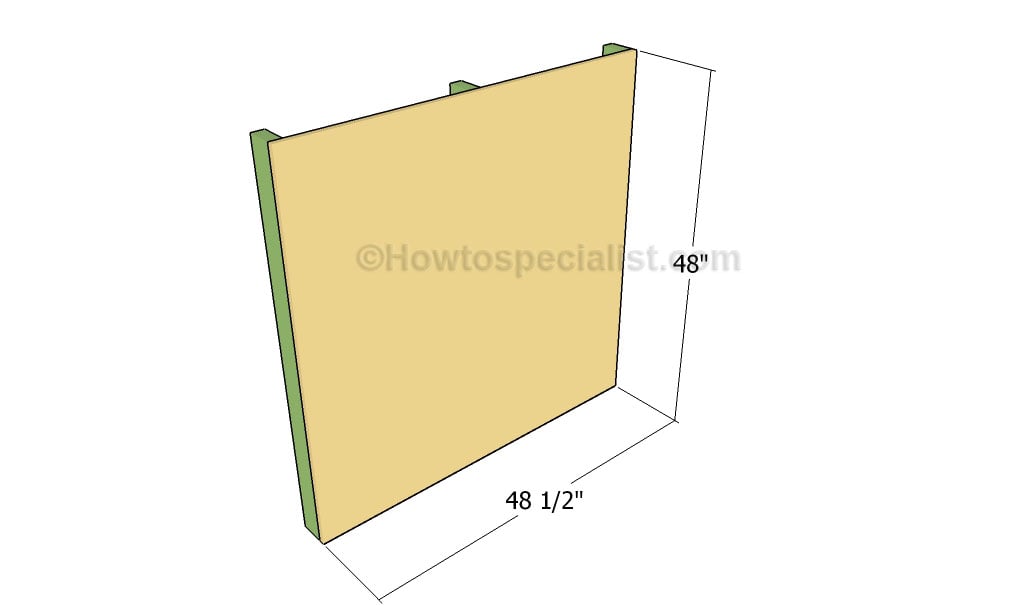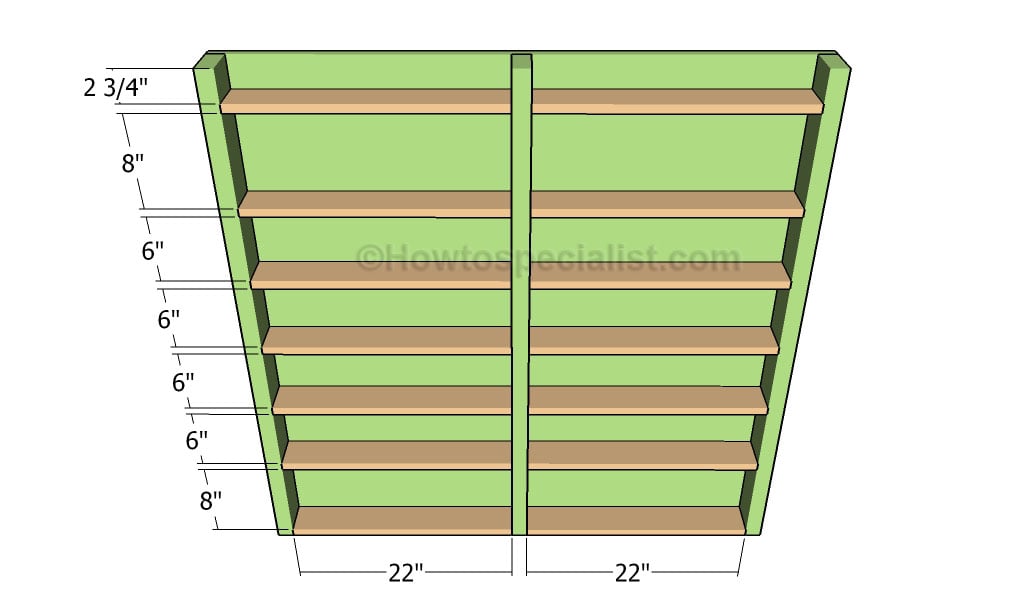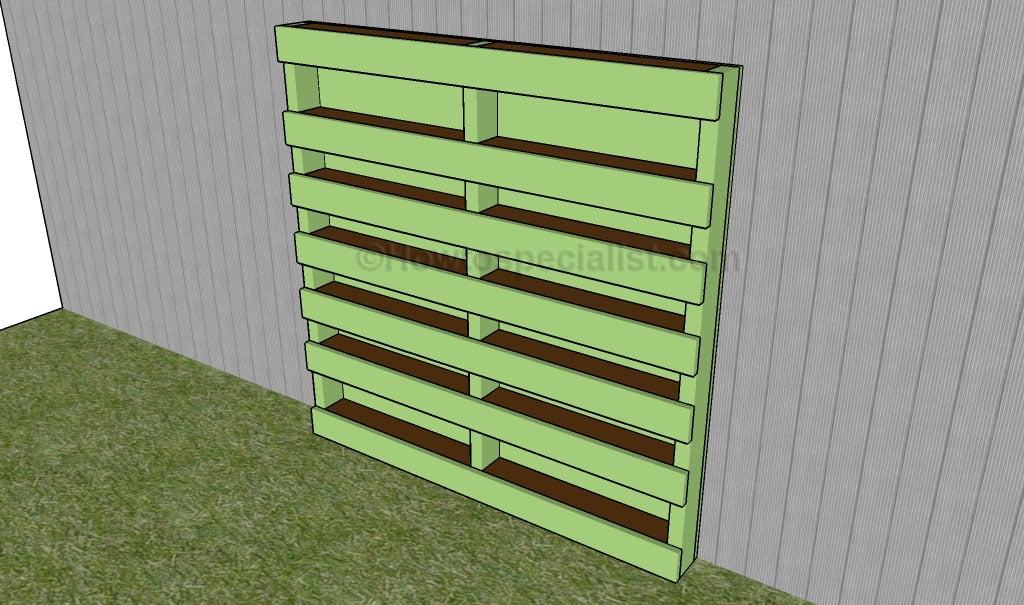This step by step diy woodworking project is about vertical planter plans. If you want to make use of your backyard space in a professional manner, we recommend you to consider building a vertical planter. Cut the components at the right size and assemble the structure in a professional manner. Lean the vertical planter against a wall and fill the containers with soil. Make sure you apply a few coats of pain over the components, in order to protect them from decay.
Before starting the actual construction project, we recommend you to plan everything, as to save money and to keep the costs under control. Adjust the size and the design of the vertical planter to suit your needs. In addition, we recommend you to invest in high-quality materials, such as pine, redwood or cedar, as they have a nice finish and are highly durable, especially in a humid environment.
If you don’t have a rich expertise in woodworking field, you should ask a friend to give you a hand with the project. There are many things that you could go wrong, so make sure you plan everything and invest in quality materials. Select the lumber with attention, making sure the components are perfectly straight and in a very good condition. Use a carpentry square to check if the corners are right-angled. Check the related projects to find out more ways of adding value to your garden. See all my Premium Plans in the Shop.
Made from this plan
Vertical planter plans

Building a vertical planter
Materials
- A – 3 pieces of 2×4 lumber – 48″ long SUPPORTS
- B – 14 pieces of 1×4 lumber – 22″ long BOTTOM
- C – 1 pieces of 3/4″ plywood – 48 1/2″x48″ long BACK
- D – 7 pieces of 1×4 lumber – 48 1/2″ long FACE
- 1 piece of 2×4 lumber – 12 ft
- 7 pieces of 1×4 lumber – 8 ft
- 1 piece of 3/4″ plywood – 4’x4′
- 2 1/2″ screws
- 1 1/4″ screws
- glue, stain
- wood filler
Tools
- Safety gloves, glasses
- Miter saw, jigsaw
- Chalk line, tape measure, spirit level, carpentry pencil
- Drill machinery and drill bits
Tips
- Apply several coats of wood stain to the wooden components
- Fill the holes with wood filler and smooth the surface
Time
- One Day
Related
Building a vertical planter

Building the vertical supports
The first step of the woodworking project is to build the vertical supports for the planter. As you can easily notice in the diagram, we recommend you to use 2×4 lumber. Select the beams that are in a good condition and cut them at the right size, after taking accurate measurements. Place the supports on a level surface, making sure they are equally-spaced and the corners are square.

Attaching the back
Build the back of the planter out of 3/4″ plywood. Mark the cut lines on the plywood sheet and get the job done with a circular saw. Smooth the edges with fine-grit sandpaper and drill pilot holes before inserting the 1 1/4″ screws into the supports. Leave no gaps between the components and check if the corners are right-angled. Add glue to the joints and remove the excess with a damp cloth.

Fitting the bottom supports
Next, fit the bottom of the planters between the vertical supports, as described in the diagram. Drill pocket holes at both ends of the 1×4 slats and secure them to the legs by using 1 1/4″, after making sure the corners are right-angled. Leave no gaps between the components and don’t forget to take accurate measurements.

Attaching the slats to the face
One of the last steps of the woodworking project is to attach the slats to the front face of the planter. Cut the 1×4 slats at the right size and secure them to the vertical supports, by using 1 1/4″ screws. You can lean the vertical planter against a wall and fill the containers with soil.

Vertical planter plans
Last but not least, you need to take care of the final touches. Therefore, you need fill all the holes with a good filler and let the compound to dry out properly, before sanding the wooden surface with 120-grit sandpaper.
Thank you for reading our article about vertical planter plans and we recommend you to check out the rest of our home improvement projects. Don’t forget to share this projects to your friends, using the social media widgets, if you’ve found it useful. LIKE us on Facebook to be the first that gets our latest updates.
